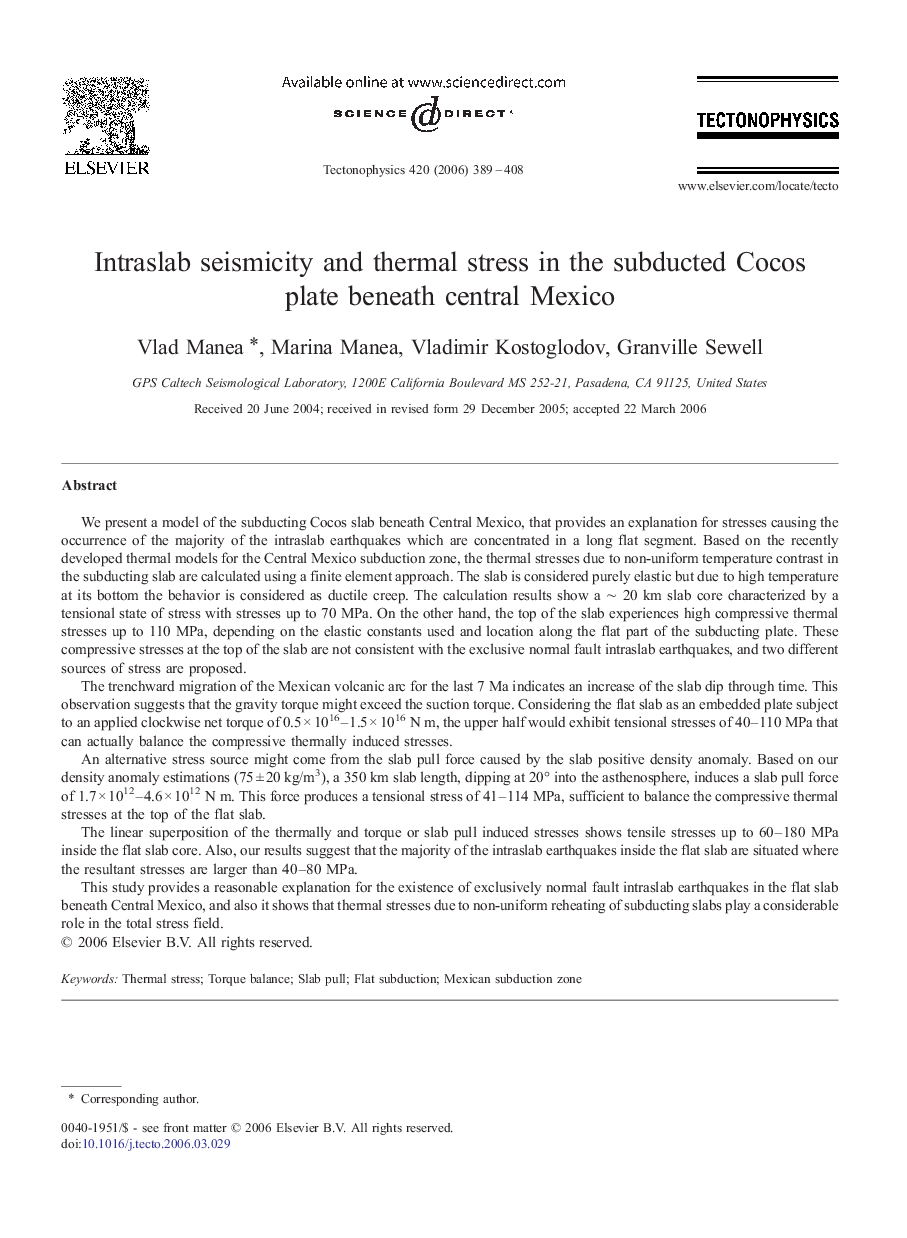| کد مقاله | کد نشریه | سال انتشار | مقاله انگلیسی | نسخه تمام متن |
|---|---|---|---|---|
| 4694950 | 1636953 | 2006 | 20 صفحه PDF | دانلود رایگان |

We present a model of the subducting Cocos slab beneath Central Mexico, that provides an explanation for stresses causing the occurrence of the majority of the intraslab earthquakes which are concentrated in a long flat segment. Based on the recently developed thermal models for the Central Mexico subduction zone, the thermal stresses due to non-uniform temperature contrast in the subducting slab are calculated using a finite element approach. The slab is considered purely elastic but due to high temperature at its bottom the behavior is considered as ductile creep. The calculation results show a ∼ 20 km slab core characterized by a tensional state of stress with stresses up to 70 MPa. On the other hand, the top of the slab experiences high compressive thermal stresses up to 110 MPa, depending on the elastic constants used and location along the flat part of the subducting plate. These compressive stresses at the top of the slab are not consistent with the exclusive normal fault intraslab earthquakes, and two different sources of stress are proposed.The trenchward migration of the Mexican volcanic arc for the last 7 Ma indicates an increase of the slab dip through time. This observation suggests that the gravity torque might exceed the suction torque. Considering the flat slab as an embedded plate subject to an applied clockwise net torque of 0.5 × 1016–1.5 × 1016 N m, the upper half would exhibit tensional stresses of 40–110 MPa that can actually balance the compressive thermally induced stresses.An alternative stress source might come from the slab pull force caused by the slab positive density anomaly. Based on our density anomaly estimations (75 ± 20 kg/m3), a 350 km slab length, dipping at 20° into the asthenosphere, induces a slab pull force of 1.7 × 1012–4.6 × 1012 N m. This force produces a tensional stress of 41–114 MPa, sufficient to balance the compressive thermal stresses at the top of the flat slab.The linear superposition of the thermally and torque or slab pull induced stresses shows tensile stresses up to 60–180 MPa inside the flat slab core. Also, our results suggest that the majority of the intraslab earthquakes inside the flat slab are situated where the resultant stresses are larger than 40–80 MPa.This study provides a reasonable explanation for the existence of exclusively normal fault intraslab earthquakes in the flat slab beneath Central Mexico, and also it shows that thermal stresses due to non-uniform reheating of subducting slabs play a considerable role in the total stress field.
Journal: Tectonophysics - Volume 420, Issues 3–4, 7 July 2006, Pages 389–408